
Neo-Latin is the style of written Latin used in original literary, scholarly, and scientific works, first in Italy in the fourteenth and fifteenth centuries' Italian Renaissance, and then across northern Europe after about 1500, as a key feature of the humanist movement. Through comparison with Latin of the Classical period, scholars from Petrarch onwards promoted a standard of Latin closer to that of the ancient Romans, especially in grammar, style and spelling. The term Neo-Latin was however coined much later, probably in Germany in the late 1700s, as Neulatein, spreading to French and other languages in the nineteenth century.

Gerardus Mercator was a Flemish geographer, cosmographer and cartographer. He is most renowned for creating the 1569 world map based on a new projection which represented sailing courses of constant bearing as straight lines—an innovation that is still employed in nautical charts.

Peter Martyr Vermigli was an Italian-born Reformed theologian. His early work as a reformer in Catholic Italy and his decision to flee for Protestant northern Europe influenced many other Italians to convert and flee as well. In England, he influenced the Edwardian Reformation, including the Eucharistic service of the 1552 Book of Common Prayer. He was considered an authority on the Eucharist among the Reformed churches, and engaged in controversies on the subject by writing treatises. Vermigli's Loci Communes, a compilation of excerpts from his biblical commentaries organised by the topics of systematic theology, became a standard Reformed theological textbook.
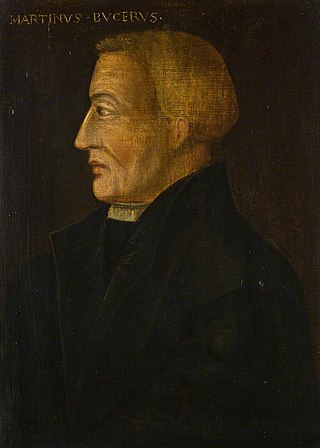
Martin Bucer was a German Protestant reformer based in Strasbourg who influenced Lutheran, Calvinist, and Anglican doctrines and practices. Bucer was originally a member of the Dominican Order, but after meeting and being influenced by Martin Luther in 1518 he arranged for his monastic vows to be annulled. He then began to work for the Reformation, with the support of Franz von Sickingen.
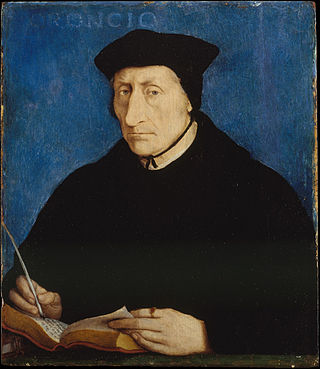
Guillaume Budé was a French scholar and humanist. He was involved in the founding of Collegium Trilingue, which later became the Collège de France.

Johannes Trithemius, born Johann Heidenberg, was a German Benedictine abbot and a polymath who was active in the German Renaissance as a lexicographer, chronicler, cryptographer, and occultist. He is considered the founder of modern cryptography and steganography, as well as the founder of bibliography and literary studies as branches of knowledge. He had considerable influence on the development of early modern and modern occultism. His students included Heinrich Cornelius Agrippa and Paracelsus.

Juan Luis Vives March was a Spanish (Valencian) scholar and Renaissance humanist who spent most of his adult life in the southern Hapsburg Netherlands. His beliefs on the soul, insight into early medical practice, and perspective on emotions, memory and learning earned him the title of the "father" of modern psychology. Vives was the first to shed light on some key ideas that established how psychology is perceived today.
Martin Anton Delrio SJ was a Dutch Jesuit theologian. He studied at numerous institutions, receiving a master's degree in law from Salamanca in 1574. After a period of political service in the Spanish Netherlands, he became a Jesuit in 1580.
Michiel Coxie the Elder, Michiel Coxcie the Elder or Michiel van Coxcie, Latinised name Coxius, was a Flemish painter of altarpieces and portraits, a draughtsman and a designer of stained-glass windows, tapestries and prints. He worked for patrons in the principal cities of Flanders. He became the court painter to successively Emperor Charles V and King Philip II of Spain.
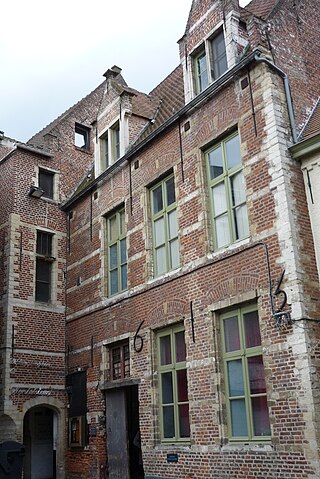
The Collegium Trilingue, often also called Collegium trium linguarum, or, after its creator Collegium Buslidianum, is a university that was founded in 1517 under the patronage of the humanist, Hieronymus van Busleyden. The three languages taught were Latin, Greek and Hebrew. It was the model for the Collège de France founded in 1530. It is located in Leuven, Belgium.

Eustace Chapuys, the son of Louis and Guigonne Dupuys, was a Savoyard diplomat who served Charles V as Imperial ambassador to England from 1529 until 1545 and is best known for his extensive and detailed correspondence.

Marcus Zuerius van Boxhorn was a Dutch scholar. Born in Bergen op Zoom, he was professor at the University of Leiden. He discovered the similarity among Indo-European languages, and supposed the existence of a primitive common language which he called 'Scythian'. He included in his hypothesis Dutch, Greek, Latin, Persian, and German, later adding Slavic, Celtic and Baltic languages. He excluded languages such as Hebrew from his hypothesis. He died in Leiden.

Andreas Schott was an academic, linguist, translator, editor and a Jesuit priest from Antwerp in the Habsburg Netherlands. He was mainly known for his editions of Latin and Greek classical literature.

Bonaventura Vulcanius was a Flemish humanist who played a leading role in Northern humanism during the 16th and 17th century. He was a professor of Latin and Greek at Leiden University for 30 years and published various books in the Latin language. He was also a poet.
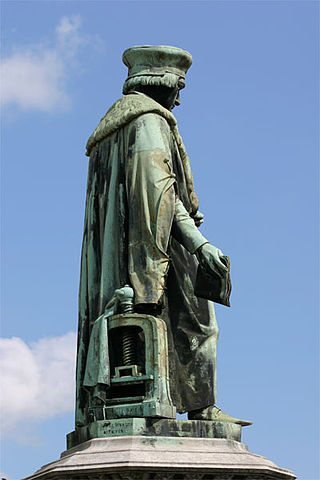
Dirk Martens was a printer and editor in the County of Flanders. He published over fifty books by Erasmus and the very first edition of Thomas More's Utopia. He was the first to print Greek and Hebrew characters in the Netherlands. In 1856 a statue of Martens was erected on the main square of the town of his birth, Aalst.
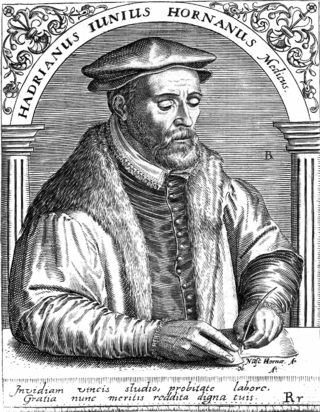
Hadrianus Junius (1511–1575), also known as Adriaen de Jonghe, was a Dutch physician, classical scholar, translator, lexicographer, antiquarian, historiographer, emblematist, school rector, and Latin poet.

The Old University of Leuven is the name historians give to the university, or studium generale, founded in Leuven, Brabant, in 1425. The university was closed in 1797, a week after the cession to the French Republic of the Austrian Netherlands and the principality of Liège by the Treaty of Campo Formio.

Jacob Cruucke or Jacob van Cruyck, also known by his Latinized name Jacobus Cruquius and in French-language literature as Jacques de Crucque was a Flemish humanist, philologist, and scholar of the 16th century. He is mainly known for his publications on the works of the Roman lyric poet Horace based on ancient manuscripts kept in the library of a local monastery, since lost to fire.

Cornelis de Schepper, Cornelis Duplicius de Schepper or Cornelius de Schepper (1503?-1555) was a Flemish mathematician, counselor and ambassador for the Holy Roman Emperor Charles V, Ferdinand I of Austria and Mary of Hungary, governor of the Netherlands. He is also known by his Latin name Scepperus.
Conrad Goclenius was a Renaissance humanist, and Latin scholar, and the closest confidant of humanist Desiderius Erasmus, who was born in Mengeringhausen in the Landgraviate of Hesse in 1490, and died in Leuven on 25 January 1539.

















